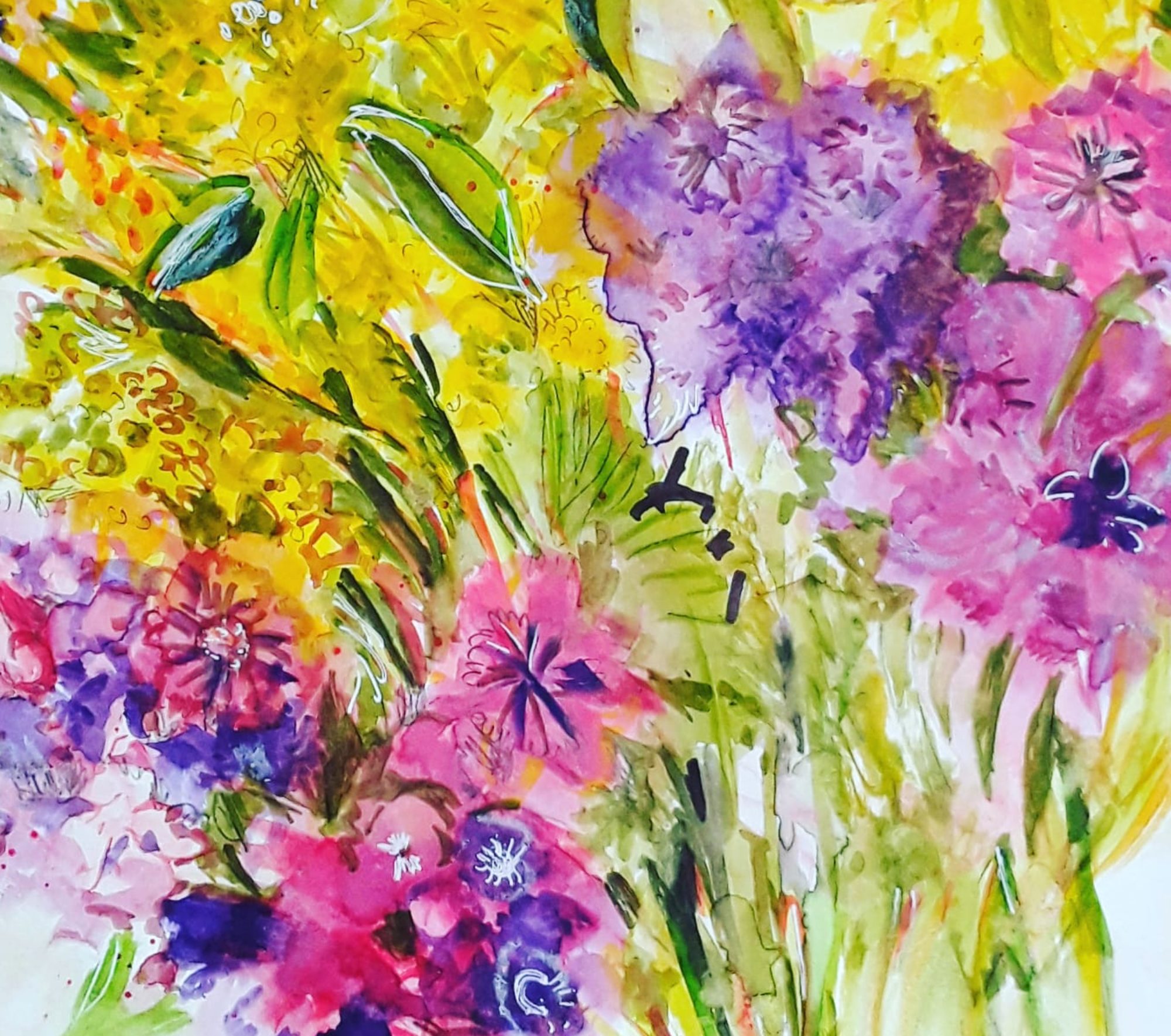
Good morning everyone. I painted this scene in a pen and wash workshop last week. And we invited Gary, one of our favourite tutors, to art society to work with us. Also to show us some pen and watercolour techniques. Actually, it was a very enjoyable evening and everyone was pleased with their own version of this snow scene. After a quick pencil sketch of the main shapes, we tried to ink the lines in, using sketchy, gestural marks. Then, for me, the difficult part, using two colours only and being very restrained with the paint brush! Honestly, I was dying to pile on more and more texture and detail. But, I’m really glad I followed Gary’s instructions.

And, I took away from this workshop the idea that sometimes less is definitely more! However, as our tutor explained, this is really a basic scene – you can add more style to your liking. Preferably after learning the method. By the way, we also added more pen marks at this point if we felt we needed them. Plus a few dabs of white gouache for snow on the trees.

Perhaps you might be interested to see this pen and wash painting I did a few years ago. In fact, I did this after another of Gary’s workshops on pen and wash, I felt so inspired that I painted a few more. Incidentally, in this picture, the pencil sketch and watercolour come first. Then detail is added later in pen, again trying not to overdo things. And, here is a post showing how I use this technique when I’m painting in plein air.












